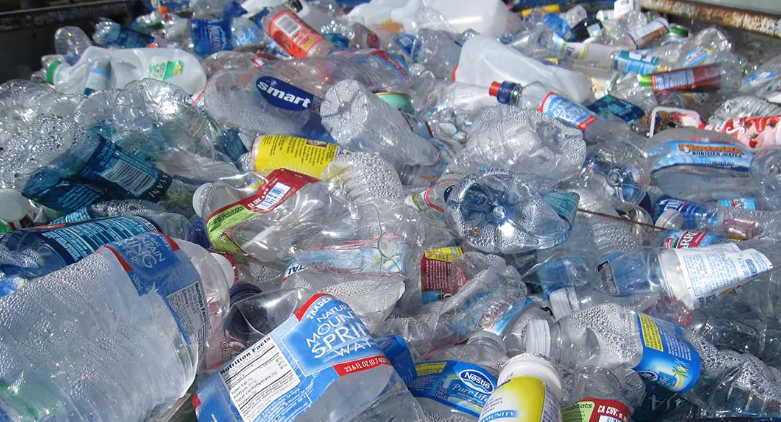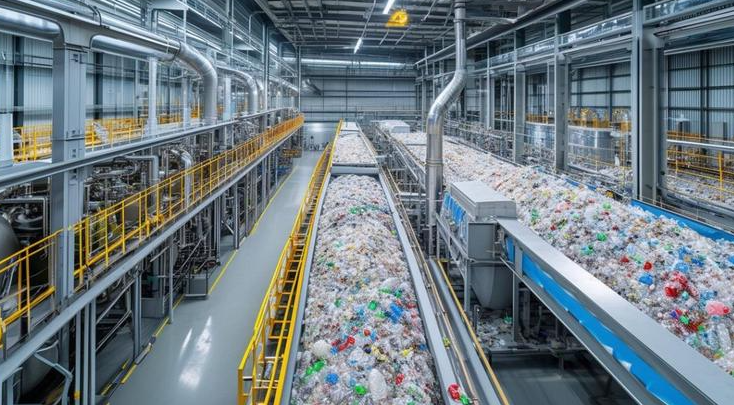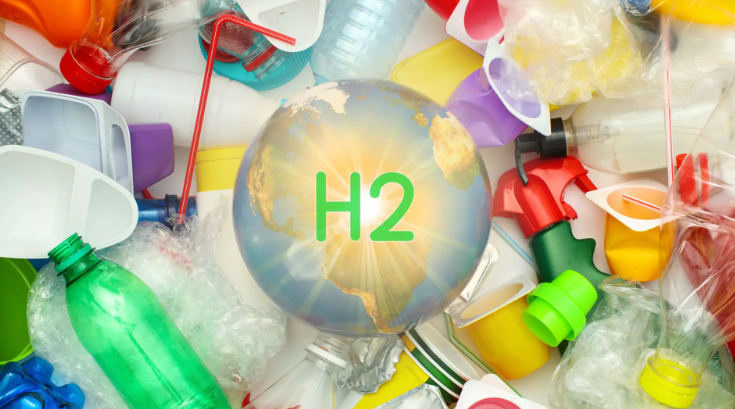By Victoria Corless
View the original article here

As the impacts of the ongoing climate crisis and environmental challenges like pollution and ecosystem degradation become increasingly evident, the need for innovative solutions that address these complex issues on multiple fronts grows more urgent.
In a recent study published in Advanced Materials, researchers led by Boris Yakobson and James Tour from the Department of Materials Science and NanoEngineering at Rice University in the US are doing just this with a new technology that converts waste plastic into clean hydrogen gas and high-purity graphene without any carbon dioxide (CO2).
“What if we turned waste plastic into something much more valuable than recycled plastic while at the same time capturing the hydrogen that is locked inside?” asked Kevin Wyss, a chemist at SLB (formerly known as Schlumberger) who completed the project as part of his Ph.D. thesis.
This idea led to a transformative solution that not only mitigates environmental harm but also harnesses untapped value from problematic waste materials.
The desire for hydrogen
Hydrogen stands out as a clean and attractive fuel source due to its ability to yield substantial energy per unit weight while generating water as its sole byproduct.
“This is what makes it sustainable or ‘green’ compared to current gas, coal, or oil fuels, which emit lots of CO2,” said Wyss. “And unlike batteries or renewable power sources, hydrogen can be stored and re-fueled quickly without waiting hours to charge. For this reason, many automobile manufacturers are thinking about transitioning to hydrogen fuel.”
In 2021, the global consumption of hydrogen reached a staggering 94 million tonnes, and demand is projected to surge in the coming decade. However, the dilemma lies in the fact that, despite hydrogen’s reputation as a green fuel, the dominant method of hydrogen production still relies on fossil fuels through a process called steam-methane reforming, which is not only energy intensive, but results in CO2 emissions as a byproduct. “In fact, for every ton of hydrogen made industrially right now, 10-12 tons of CO2 are produced,” said Wyss.
An emerging alternative is to produce hydrogen gas through a process known as electrolysis, where water is split into its constituent elements using electricity. While the electricity source can be renewable, such as solar, wind, or geothermal energy, ensuring this remains a challenge. These processes also require additional materials, such as catalysts, and cost around $3-5 USD per kg of hydrogen, making it difficult to compete with the reforming process at ~$2 USD per kg.
“You can see why we need methods to produce hydrogen in an efficient and low-cost method that does not produce large amounts of CO2,” said Wyss.
The problem with plastics and hydrogen fuels
Wyss explained that the challenges posed by plastic waste pollution and low-carbon hydrogen production are problems that scientists have successfully addressed decades ago.
“In the case of plastic waste pollution, we know how to recycle plastics — the problem lies in the fact that recycling is so expensive, with the high costs of manually separating plastic types, washing the waste, and then re-melting the polymers,” he said. “As a result, recycled plastics often cost more than new plastics, so there is not an economic incentive to recycle and thus, pollution is still a problem decades later.
“In the case of hydrogen production, we know how to make hydrogen fuel without producing CO2, but is two to three times more expensive than methods that produce hydrogen with lots of CO2.”
Hence, the real challenge lies not in solving these problems, but rather finding ways to reduce the cost of their solutions — a challenge Wyss and his colleagues are tackling head on.
Flash Joule heating breaks down plastics
Their approach uses flash Joule heating, a cutting-edge technique for rapidly heating materials to extremely high temperatures. To achieve this, an electric current is run through a material that has electrical resistance, which swiftly converts the electricity into heat, achieving temperatures of thousands of Kelvins in mere seconds.
“We discharge current through the sample of plastic, with a small amount of added ash to make it conductive, and achieve temperatures up to 2,500°C within a tenth of a second, before the sample cools back down within a few seconds,” said Wyss. “This rapid heating reorganizes the chemical bonds in the plastic — the carbon atoms in the plastic convert to the [carbon-carbon] bonds of graphene, and the hydrogen atoms convert to H2 [gas].”
“This process upcycles the waste plastics with high efficiency using no catalyst or other solvents,” he continued. “Once our plastics have undergone the reaction, we also get pure, valuable graphene, used for strengthening cars, cement, or even making flexible electronics and touchscreens, and which currently has a value of $60,000-$200,000 per ton.”
Wyss says that his lab at Rice University has been working on flash Joule heating for the past five years, but their main focus was previously on making graphene from plastics. But he says that, after some time, they realized that many plastic polymers also contain atomic hydrogen. “If we end up with graphene, which is 100% pure carbon, where is all the atomic hydrogen locked in the plastic going?” he asked.
They therefore set about trapping and studying the volatile gases emitted during their flash Joule heating process, and to their surprise discovered they were liberating almost 93% of the atomic hydrogen and were able to recover up to 64% of it as pure hydrogen — yields that are comparable to current industrial methods that emit five to six times more CO2.
“Our method produces 84% less CO2 and greenhouse gases per ton of hydrogen produced, compared to the current popular industrial method of steam methane reforming, […] and uses less energy than current ‘green’ hydrogen production methods, such as electrolysis,” Wyss said.
Making an EarthShot
This aligns with the US Department of Energy’s EarthShot Initiative, modeled after the historic “Moonshot Challenge”, which aimed to put a man on the moon in the 1960s. Similarly, the EarthShot initiative seeks to mobilize resources and creativity to achieve ambitious environmental goals.
These goals are intended to be scalable, achievable, and designed to tackle critical issues related to climate change, biodiversity loss, pollution, and other environmental crises. “The climate crisis calls for a different kind of moonshot,” they wrote on the website. “Energy Earthshots [such as the Hydrogen Shot] will accelerate breakthroughs of more abundant, affordable, and reliable clean energy solutions within the decade.”
The goal is to make 1kg of clean hydrogen cost $1 USD within the next decade, where clean hydrogen is defined as any that is produced with less then 4 kg of CO2 as a byproduct.
“Our research has shown that we can do that now, if the [flash Joule heating] process is scaled up, converting waste plastics into clean hydrogen and graphene,” said Wyss. “Currently, 95% of hydrogen produced globally results in 10-12 kg of CO2 being produced as a byproduct. Our process produces as little as 1.8 kg of CO2 per kg of hydrogen.”
Before this can happen, Wyss acknowledges that scale-up is still an issue. As hydrogen is a flammable gas, its safe capture and purification requires some careful planning and engineering. But Wyss is hopeful it can be done.
“A company named Universal Matter was started three years ago to scale-up the flash Joule heating process to make graphene,” Wyss said. “In that short time, [they have] scaled from gram-per-day levels to ton-per-day graphene production. So, we are very optimistic that this hydrogen production method can be similarly scaled successfully as the core principles are identical.”
Reference: Boris I. Yakobson, James M. Tour, et al., Synthesis of Clean Hydrogen Gas from Waste Plastic at Zero Net Cost, Advanced Materials (2023). DOI: 10.1002/adma.202306763
Feature image credit: tanvi sharma on Unsplash


